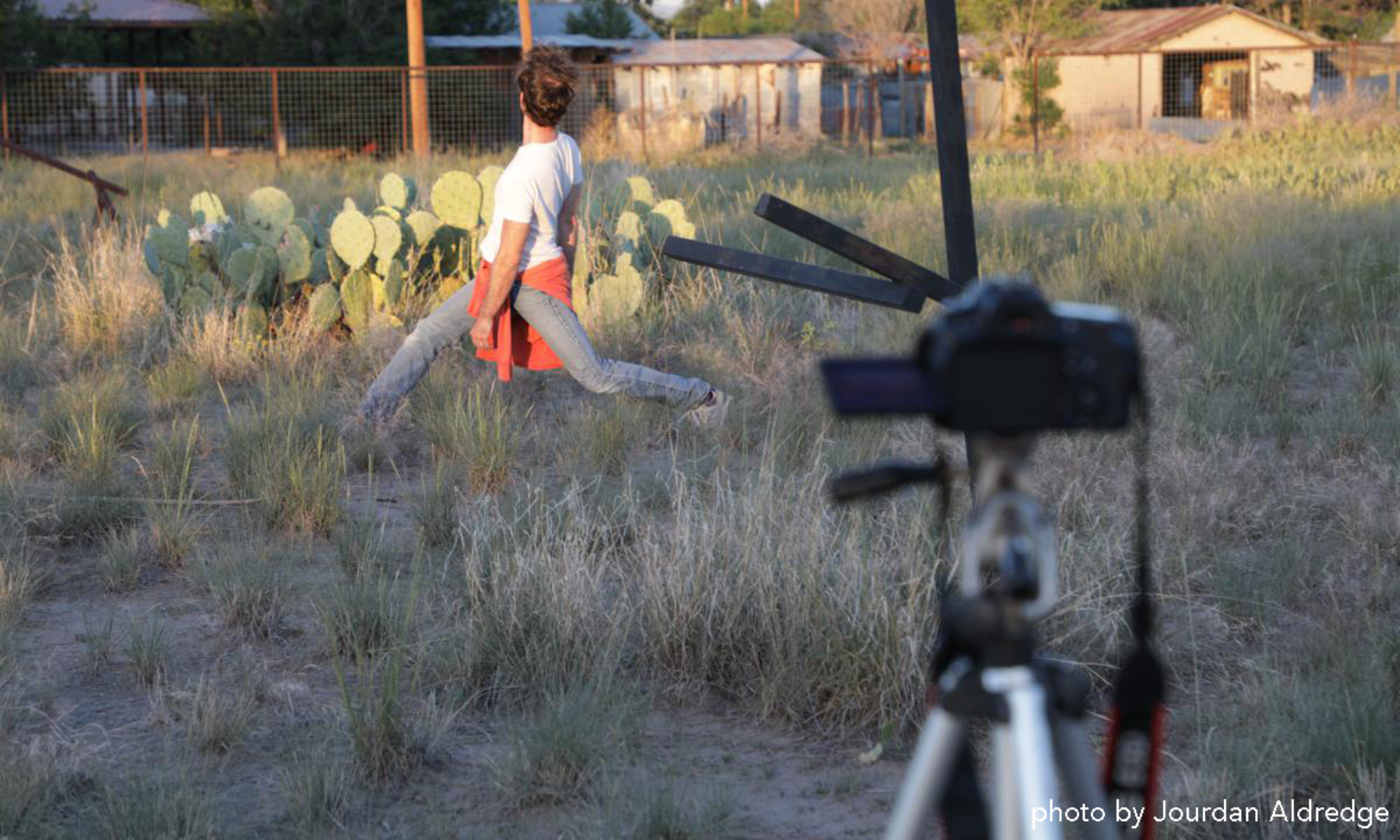Bojana Cvejić posits that the improvising dancing that Burrows and Ritsema do in their piece WDSQ is significantly different than dance improvisation. She writes that their performance is the result of a “critical departure from dance improvisation” (Cvejić, 2015, p.160). I take the term critical departure to mean that Cvejić considers the methods and models used by Burrows and Ritsema when creating their performance are the results of a research and rehearsal process that was heading in a different direction than dance improvisation. As I have not seen the piece, I can only assess how Burrows’ and Ritsema’s dancing relates to dance improvisation by what Cvejić has written about their performance.
I would propose that Burrows and Ritsema do not achieve a critical departure from dance improvisation as a whole. Rather, it could be said that they create their performance using dance improvisation. It could be that I have misunderstood Cvejić. The critical departure that they have created might be from their own habits. Such an interpretation could be read in the following quotation:
…in WDSQ we encounter an exemplar of a creation by problem that operates in several registers: the object of an Idea of movement, the form of which seems impossible; a procedure constraining a process by conditions and rules for questioning movement, which results in the invention of a new syntax…(Cvejić, 2015, p. 159)
The use of conditions and rules to expand a dancer’s movement vocabulary, syntax, movement possibilities is a standard idea of one use of dance improvisation. Most practitioners of dance improvisation would attest to this thought.
Earlier in the chapter Exhausting Improvisation: Stutterances, Cvejić discusses a movement process Burrows and Ritsema engage in to problematize their movements. She writes that “…they issue it and abort its development at the same time” (Cvejić, 2015, p. 153). Such a process sounds very similar to Chaos of Intention. Chaos of Intention is part of Re:Wire Dancing States, a body of improvisational work initiated by choreographer Nina Martin and is continued to be developed in conjunction with her colleagues of the Lower Left Performance Collective. (Full disclosure, I am a member of the Lower Left Performance Collective).
Chaos of Intention (CoInt) could be described in a similar manner as the method of problematizing movement Cvejić writes about. CoInt requires that the dancer change, modify, or transform his movement as soon as he recognizes it as familiar in some way. By constantly tracking the movements he creates (issues) and changing them so that they do not progress (develop) as they normally would, the improvising dancer is able to expand his movement potential. A goal of CoInt could be described as attempting “…to move and yet not produce a cognizable movement” (Cvejić, 2015, p. 149).
“Improvisation in WDSQ begins exactly by dismantling the function of the body as the source or point of origin of movement” (Cvejić, 2015, p. 141). This quotation relates Cvejić’s thoughts about Burrows and Ritsema’s improvising to Forsythe’s practice of improvisation. His methodology results from “extending and amplifying knowledge from and individual authoring body” (Cvejić, 2015, p. 141). Cvejić proposes that Burrows and Ritsema’s improvising is different because it does not make use of the dancer’s body for inspiration, but dismantles that relationship and makes use of other sources.
The use of external sources for movement inspiration and origination is also part of the Re:Wire Dance States methodology. There are several binaries that an improvising dancer can make use of as an external “source or point of origin of movement” (Cvejić, 2015, p. 141). Big/Small and Near/Far are two such binaries.
Big/Small relates to several variables. It can relate to the range of movements through space that the dancers creates. These movements through space can be big, small or somewhere in between. Big/Small can also refer to the amount of time that an action occurs. The movement of an arm can take a big or small amount of time. Near/Far can be used to relate to the space that the dancer is in. Using this score, the improvising dancer creates and notices the distance between different objects, points, people in space. He can then change his location in space to alter these relationships, making them nearer or farther than before.
It could be argued that these two binaries make use of the body as a point of reference for movement (Near/Far) or make use of the body to move through space and time (Big/Small) and therefore do not fully remove the body as the “…source or point of origin of movement” (Cvejić, 2015, p. 141). I would however argue that they dismantle it to an extent by pulling the dancer’s awareness out of his immediate corporeal somatic experience.
In light of the similarities to extant improvisational methods, the procedures that Burrows and Ritsema use to create their dance performance WDSQ are not a “critical departure from dance improvisation” (Cvejić, 2015, p.160). Their procedures are related and comparable to a whole host of improvisational theories and practices already in use.


